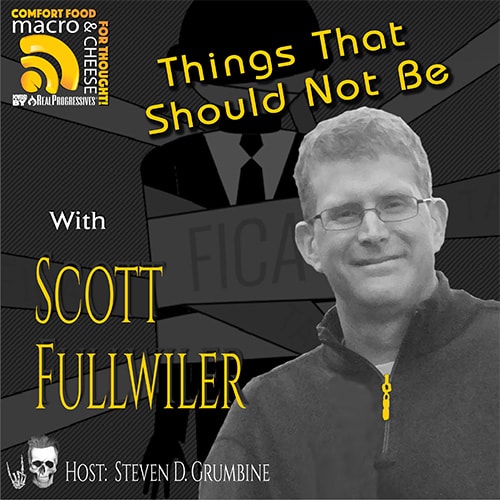On Friday, June 30, the United States Supreme Court struck down President Joe Biden’s meager attempt to offer $10,000 to $20,000 in student loan “forgiveness” to a means-tested group of borrowers. Although the Biden administration plans to introduce a different loan cancellation plan, interest for all federal student loans will begin to accrue for the first time in three years starting in September, while payment deadlines will resume in October. This business-as-usual resumption of an admittedly broken lending system will heap an unnecessary financial weight on 45 million Americans already burdened by inflation, interest rate hikes, and wage suppression. With surveys showing that most borrowers cannot resume payments without cutting other spending, analysts anticipate a retail bloodbath this fall, stoking fears of an imminent recession.
The carnage that will soon be wrought over student loans seems morbidly fitting, considering that the first known student loan system began with manslaughter and murder. This shocking bit of history shouldn’t surprise anyone knowledgeable about the origin of debt, since the concept of wergild, the Anglo-Saxon word for “man-payment” or “blood money,” is cited by economists like L. Randall Wray and the late anthropologist David Graeber as one of the primary origins of debt and the assorted currencies that came to be known as money. For many cultures throughout history, humans incurred debt whenever their actions resulted in the injury or death of a community member. The community then quantified the loss, assessed a fine to the perpetrator, and upon payment in the local currency, the debt was absolved. The University of Oxford attributes the origin of its own finance department to the revenue generated from this type of blood debt.
In the winter of 1208 or 1209 an Oxford clerical student killed a woman and then skipped town. Chronicles from the medieval monk Roger of Wendover document that “a certain clerk engaged in the liberal arts at Oxford killed a certain woman by accident and when he found that she was dead he decided to flee.” Enraged, the Oxford mayor and other townspeople ransacked the rented home of the fugitive and arrested his roommates, who were then hanged by order of the king a few days later. The royally sanctioned execution of these religious scholars in turn enraged the Pope, who had already excommunicated the English monarch in a dispute over the confiscation and taxation of church property. Thus began a bitter feud between the university and the town of Oxford, as well as a continuation of the conflict between the Church and the English monarchy.
The hostility between royal and papal authorities concluded with the 1214 Legatine Ordinance of Oxford, in which the Pope’s representative issued several injunctions against the town, including commands that the townspeople offer half-price rent to university enrollees, provide a yearly feast for impoverished students, and pay the university “52 shillings a year forever for the use of poor scholars.” The university stockpiled this annual sum until 1240, when Bishop Robert Grosseteste declared that the wealth amassed from this blood money be used to fund the university’s first “loan chest.” Rather than using these funds to directly benefit Oxford students, as the papal legate had ordered in 1214, the bishop’s plan used the accrued funds to create the first university lending system, a literal chest housed at the priory of St. Frideswide on the Oxford campus, where students would deposit collateral in exchange for tuition. The University of Oxford’s finance website describes Grosseteste’s invention:
“This was essentially a loan chest, a sort of academic pawnshop. Money was lent from it to finance needy students who deposited as security some pledge of value – a piece of plate, a garment or a book – which was to be sold at the end of the year if there were no repayment of the loan.”
In her 2016 essay “Student Loans Date Back to the Middle Ages,” Dr. Jenny Adams of the University of Massachusetts-Amherst writes that for most of these medieval lending agreements, “the value of the collateral far outweighed the actual amount of the loan.” Thus, the university’s loan chest could grow whenever a student defaulted. All this revenue — which became the basis of the entire Oxford student financing system — originated with blood money paid for the deaths of one woman and a few innocent students.
While today’s college lending system may not begin with death, in the United States, where Americans owe a cumulative $1.75 trillion in student debt, averaging to about $37,000 per borrower, the high cost of a college education can have deadly consequences. A 2021 University of Washington survey found that “debt burden is strongly associated with increased likelihood of [a] suicide attempt” and in fact the association with debt is “comparable to or greater than that for other major predictors of suicide.” In that same year a survey from Student Loan Planner revealed that 1 out of every 14 survey respondents experienced suicidal ideation due to their student loan debt. Within that group of 2300 student debtors, the frequency of suicidal thoughts increased with the amount of debt and level of social precarity. The results included the following findings:
- 1 out of 6 single female debtors earning less than $50,000 (about $7,000 more than the average starting salary for a public school teacher) suffered from regular and intrusive thoughts about death or suicide.
- Survey respondents with twice as much debt as earnings were 2.5 times more likely to consider suicide.
- Even enrollment in federal debt cancellation programs like the Public Service Loan Forgiveness (PSLF) program did not reduce these debtors’ suicidal ideation.
As if these survey findings aren’t tragic enough, just a few hours after the Supreme Court’s ruling on Friday, the New York Times offered “death” as one of six methods debtors could use to have their student loans cancelled. (Luckily, readers could only access the article via a paywall, meaning most student debtors couldn’t afford to read it.) Still, the fact that debtors think so frequently of suicide suggests something horrifically sinister about America’s method of funding education. Death should not be the solution to the student debt crisis, any more than sending a child to war should be the recommended method of getting an affordable education.
Today the average cost for in-state tuition plus housing at a public four-year university is over $25,000 per year, nearly half of the average salary of an American worker aged 25-34. Tuition and housing costs for out-of-state public college students and private, nonprofit college students are even higher. Since the average federal Pell grant for low-income students is only $4,491, that still leaves a large remaining balance to cover via loans or other means. Even parents who have done their best to save an average of $25,000 for a child’s college education will still come up short.
The exorbitant costs of student debt might be easier to bear if it weren’t for the fact that student debtors, unlike other American debtors, cannot easily discharge their loans through bankruptcy. According to bankruptcy lawyer Stephen Sather in a 2014 article for the American Bankruptcy Institute , “Prior to 1976, student loans were dischargeable the same as any other unsecured debts.” Sather outlines the several milestones in Congress’s efforts to erode bankruptcy protections for student debtors, beginning with the Higher Education Act of 1976 and ending with the 2005 bankruptcy law. Sather shows how laws from the past several decades – all of which were supported by then-Senator Joe Biden – incrementally crumbled the wall of bankruptcy protections that previously protected student debtors. Today, student debt can only be discharged if the debtor can prove “undue hardship,” a legal standard that is onerous to prove.
While the medieval students who gave up their valuables for the benefits of an Oxford education also faced harsh bankruptcy laws, they had one major advantage over these modern student debtors: their loans were interest-free. In medieval times, the Catholic Church strictly denounced the sin of usury, which at the time was defined as any kind of loan with interest. In his 1986 article “Usury and the Medieval English Church Courts,” legal historian Richard H. Helmholz writes, “Any gain stemming from a loan, no matter how small, was considered usurious and unlawful,” resulting in excommunication or the denial of a Christian burial. As a quasi-religious institution during this era of strict usury prohibitions, Oxford did not collect interest on its first student loans.
In a recent interview with Ben Norton, economist Michael Hudson further clarifies the classic definition of usury:
“There were no words in any ancient language to distinguish usury from interest. They were the same word. The idea that usury is charging above the interest rate is a modern concept only dating from the 12th century [AD]. Interest was usury; usury was interest. They were all the same idea. No distinction.”
Thus, the United States federal government, with its average student loan interest rate of 5.8%, fits the classic definition of a usurer. The US Congress sets student interest rates yearly through a complicated formula first established by the Higher Education Act of 1965. Because so many student loan borrowers make so little, many end up on Income-Contingent Repayment (ICR) plans, which allow low-income debtors to make payments that fit their monthly income. The problem, however, occurs at the end of each payment year when an ICR borrower’s accrued interest gets added back, or “capitalized” to the principal of the loan, resulting in a higher balance. That higher balance then becomes the basis on which future interest is calculated and then capitalized. Capitalization also occurs in many scenarios outside of the ICR, including the end of a deferment or a forbearance, or the end of the six-month “grace period” students typically receive after graduating from college. For many borrowers, this results in loan balances that exceed the amount borrowed. Nerdwallet provides a helpful example of how capitalized interest can affect a student right out of college:
“Say you’re an undergraduate dependent student who borrowed the maximum amount of unsubsidized federal student loans each year from 2014 to 2018. You would owe $27,000, plus $3,276 in capitalized interest.”
Hence, some student debtors owe additional interest roughly the equivalent of a couple months’ rent before they even begin paying back what they actually borrowed. According to the Pew Charitable Trust, “In fiscal 2019 alone, the government capitalized $21.7 billion in unpaid interest on outstanding student loans.” Essentially, this student loan interest functions as an education tax that only poor people pay.
According to Yeva Nersisyan, an economist and research scholar at the Levy Institute, the fact that the US Congress charges its constituents any student loan interest at all is “ridiculous.” In a recent episode of Macro N Cheese, Nersisyan emphatically states, “The government should not be making money off of students.” Since the US government is the sole legal issuer of the US dollar, economists like Nersisyan, who understand the nature of the US monetary system, find it mind-boggling that the federal government would try to extract additional dollars from student borrowers — dollars that a government with a sovereign, fiat currency does not need.
As proponents of Modern Monetary Theory (MMT), Nersisyan and frequent co-author L. Randall Wray have published a whole body of work outlining how monetarily sovereign nations like the United States do not face financial limits on the money they can create. In their 2020 article “The Myth of Helicopter Money,” Nersisyan and Wray explain how MMT “demonstrates that a government like that of the US does not, in fact, face financial constraints.” In reference to the $2.1 trillion spending authorized in the April 2020 COVID-19 relief package, they write, “MMT’s proponents have always maintained that government spending is limited only by available economic capacity. The US rarely reaches such real spending constraints in normal times.” In his 2022 book Making Money Work for Us: How MMT Can Save America, Wray further clarifies how government fiscal limitations work:
“Government has an unlimited supply of its own money – but there have to be available productive resources for it to purchase. In modern economies that is not the usual constraint, however. Government’s sovereign power is typically constrained in two main ways: arbitrary self-imposed budget constraints, and exchange rate constraints. Many countries happily impose both types.”
In other words, the US government can never run out of its own dollars. It can run out of the goods and services that can be purchased with those dollars, but according to Wray, that isn’t often the case. Rather, governments like the United States often prevent the creation of money through various artificial limits, like the infamous debt ceiling.
Thus, as Nersisyan says, the notion that the US federal government needs to collect interest on a student lending program “only makes sense in this mainstream framework where the government is financially constrained.” But because there is no financial constraint on a nation able to issue its own currency, the billions of dollars Americans give to the federal government in accrued and capitalized interest is, indeed, “ridiculous.” The US government does not need the billions in interest revenue it is squeezing from its debtors. In fact, it doesn’t even need debtors to pay back the dollars they originally borrowed. The dollars printed on every student loan check issued in the last several decades did not even exist until those loan checks were printed and sent as tuition payments to colleges, and as long as those colleges continue to have enough resources — i.e., professors, books, lab facilities, and housing — to educate their students, no real obstacles prevent the government from providing national free public college. Elected officials have built all the financial and bureaucratic barriers people must climb if they want an education. Our Congress and President have chosen to make education a debt that must be paid with the blood and sweat of its citizens, especially poor citizens, who must pay the currency-issuing government usurious interest rates for the privilege of becoming educated and contributing to the economy.
Centuries ago, the first student lending system began with the small fortune accrued from blood money. In many ways, the United States funds its current student lending system the same way. The prosperity of the entire American empire depends on the labor and sacrifice of its workers. As with all austerity measures, exorbitant debt stifles the power of the working class, confining them to a perpetual state of indentured servitude, whereby their only means of survival is to work longer and harder to pay off the education the elite class told them they needed to thrive. Michael Hudson has said, “Debts that can’t be paid, won’t be,” and surveys suggest that a third of borrowers will not be able to afford these loan payments. Organizations like the Debt Collective are calling for a debt strike, which will allow debtors to “politicize nonpayment collectively” and advocate for the mass cancellation of all student loans, along with the free public college that the US government, as a currency issuer, can more than afford. It’s time for the blood debt incurred by generations of Americans seeking higher education to finally be absolved. It’s time to cancel all student debt and kick down the artificial barricades that restrict Americans’ access to college.







